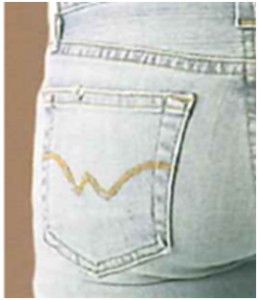StepChange Innovations blog covers ecology issues
The last part of the article series compares the different methods in jeans bleaching, which have been elaborated in detail in part 2, and summarize their advantages and disadvantages. The used chemicals in each of the processes are assessed against ecological criteria, especially considering the targets the ZDHC program, in order to find processes with low environmental impact. The target is to select processes which have a good price/performance level and a, good reproducibility, while using environmentally friendly chemicals, or avoid the use of chemicals.
In this part different jeans bleaching processes are discussed, their benefits and features as well as their problems. The study is looking at chemical and mechanical treatments for open-pocket machines for fabrics and single garments. The methods discussed include bleaching processes using hypochlorite, permanganate, hydrogen peroxide, organic peroxides, laccase, ozone, glucose, sandblasting, electrochemical and laser engraving
Greenpeace increases the pressure on leading retail brands. The environmental pressure group revealed data on hazardous fluorocarbons, PFOA, PFOS and others, tested on outdoor textiles from leading brands. We had a closer look at the report and discuss the issue in light of the progress in the ZDHC programme.
Jeans have become very popular across all age groups, and genders. Popular fashion shades include many styles and colors, from dark blue to bright blue and from black to grey. To obtain pale shades, jeans are usually bleached. This first article gives an overview of the working sequence and key requirements of the bleaching process
Membrane technologies are applied for seawater desalination to address one of the world´s biggest challenge: scarcity of clean water. Scientific progress is reported with nano-scaled perforated graphene membranes. Potentially this would allow more affordable water desalination and give access to abundant clean water.

Greenpeace zero discharge campaign
The joint roadmap of the zero discharge of hazardous chemicals (ZDHC) programme in the textile industry is moving to version 2. An environmental management system and work streams are suggested. Greenpeace criticized some of the proposed changes to the roadmap.
Cotton processing has various ecological problems, from polluted effluents to high water and energy consumption. Various concepts to improve this situation are discussed in this article. Best available technology can achieve zero discharge, especially by careful selection of dyes and processes, proper effluent treatment and recycling concepts. Future prospects include modified cellulose fibres, by chemical modifications, or bioengineered cotton.
The Greenpeace detox campaign gets to a higher gear. In this article we outline some technical challenges of particular concern related to possibly critical contaminants in reactive dyes, disperse dyes and in indigo.
Meanwhile a series of famous big brands have joined the zero discharge of hazardous chemicals (ZDHC) programme, a response to the detox campaign initiated by Greenpeace in 2011. However, the speed of progress has been criticised by Greenpeace. We put some lights on the reasons why.
Greenpeace started a campaign to stop the release of hazardous chemicals used in textile manufacturing, associated with the suppliers of major international clothing brands.









